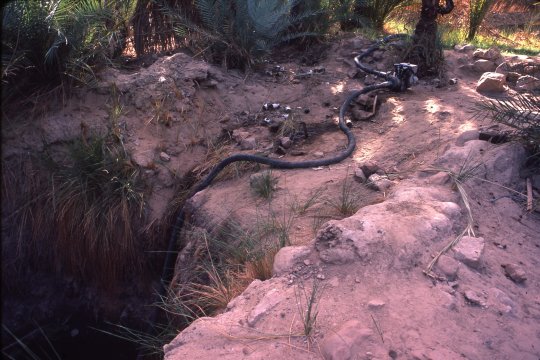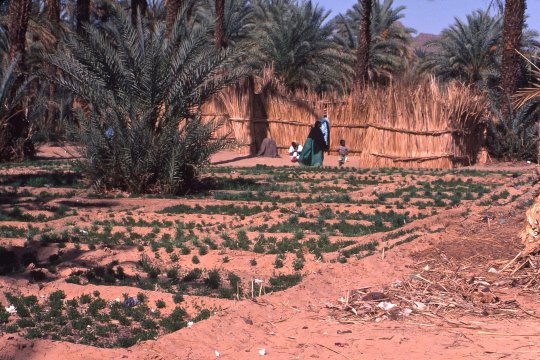|
John Tyman's Cultures in Context Series EGYPT and the SAHARA www.johntyman.com/sahara |
|
4.8 Case Study Pt. II : The Tuareg : 326 -348 |
| . |
|
John Tyman's Cultures in Context Series EGYPT and the SAHARA www.johntyman.com/sahara |
|
4.8 Case Study Pt. II : The Tuareg : 326 -348 |
| . |
 |
| .326. Most “upper class” Tuareg men still despise farming but some younger men have swallowed their pride. They grow crops today for their own use, sometimes pumping water from wells. (Djanet) |
 |
| .327. Others even maintain the aqueducts dug by former slaves, or pump water from their headworks. Many of these actually cultivate gardens alongside former slaves and haratin! (Djanet) |
 |
| .339. Today Tuareg women spend most if not all of their time in the towns and villages where they have taken up permanent residence ... and may now help care for their family’s garden. (Djanet) |

![]()
Text and photos by John Tyman
unless otherwise indicated.
Intended for Educational Use
Only.
Contact Dr. John Tyman at johntyman2@gmail.com
for more information regarding
licensing.
![]()
www.hillmanweb.com
Photo processing, Web page layout,
formatting and hosting by
William
Hillman ~ Brandon, Manitoba ~ Canada